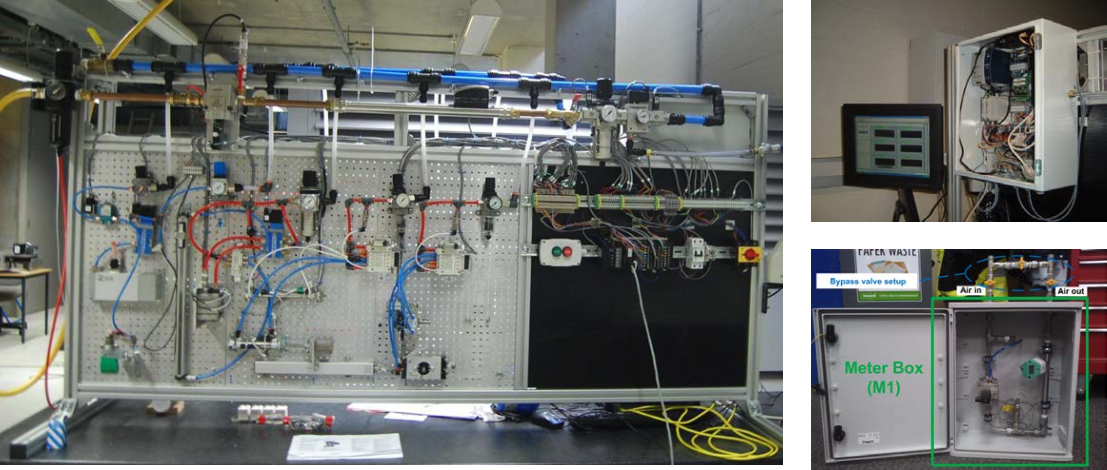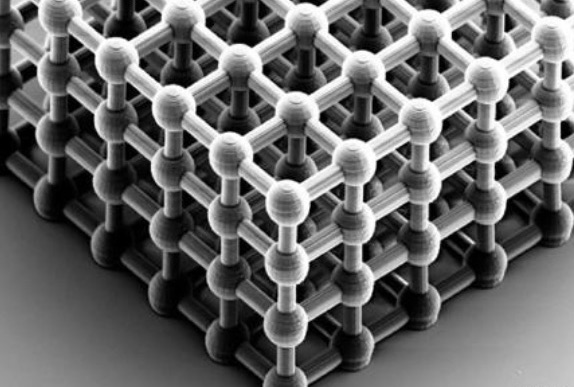STAM-Science and Technology in Advanced Manufacturing
Parsons Building, Trinity College Dublin, Ireland
Current Manufacturing Process Analytics Projects
Industry 4.0
SR-TEX - Smart Reconfigurable Test Execution System
Dr. Garret O'Donnell
Garret.ODonnell@tcd.ie
+353 1 896 1184
Research Staff
Dr. Jeff Morgan
morganje@tcd.ie
Industry Partner

Description
The world has witnessed 3 industrial revolution: Mechanisation, Electricity, and Integrated Technology. Each revolution marks a point in time where innovation changed the world both economically and sociologically. Currently the manufacturing world is on the verge of a potential 4th industrial revolution known as Industry 4.0.
This revolution is made possible due to the advancement in computer computation, industrial communication, and cloud technology. Industry 4.0 has the potential to create smart machines, storage, and production systems, which are capable of seamless data distribution, autonomous collaboration, and potentially artificial intelligence.
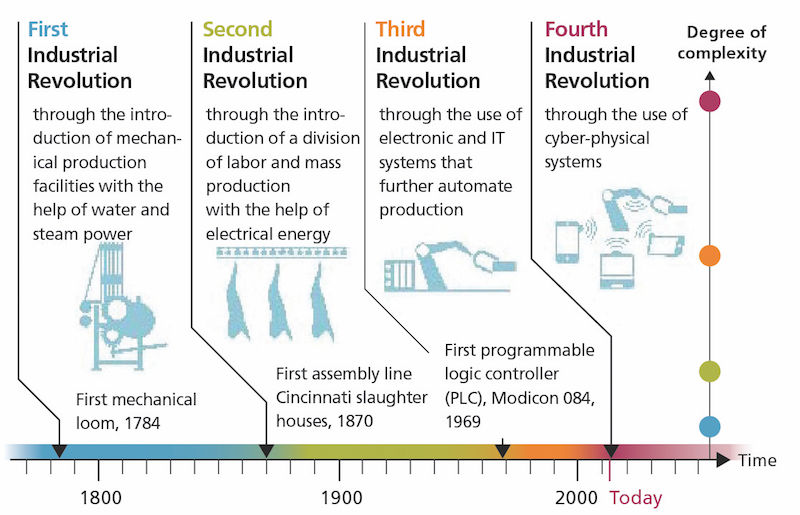
Industrial Revolutions 1.0 - 4.0
STAM is currently exploring Industry 4.0 in the areas of process monitoring, advanced signal analysis, and decentralised control. Through this research and an Enterprise Ireland industrial collaboration with Ceramicx Ireland, the concept of open production technology has been developed, and for the first time realised. More specifically the Smart Reconfigurable-Test EXecution" (SR-TEX) platform has been created. This platform enables the dynamic forming of an automated production test equipment.
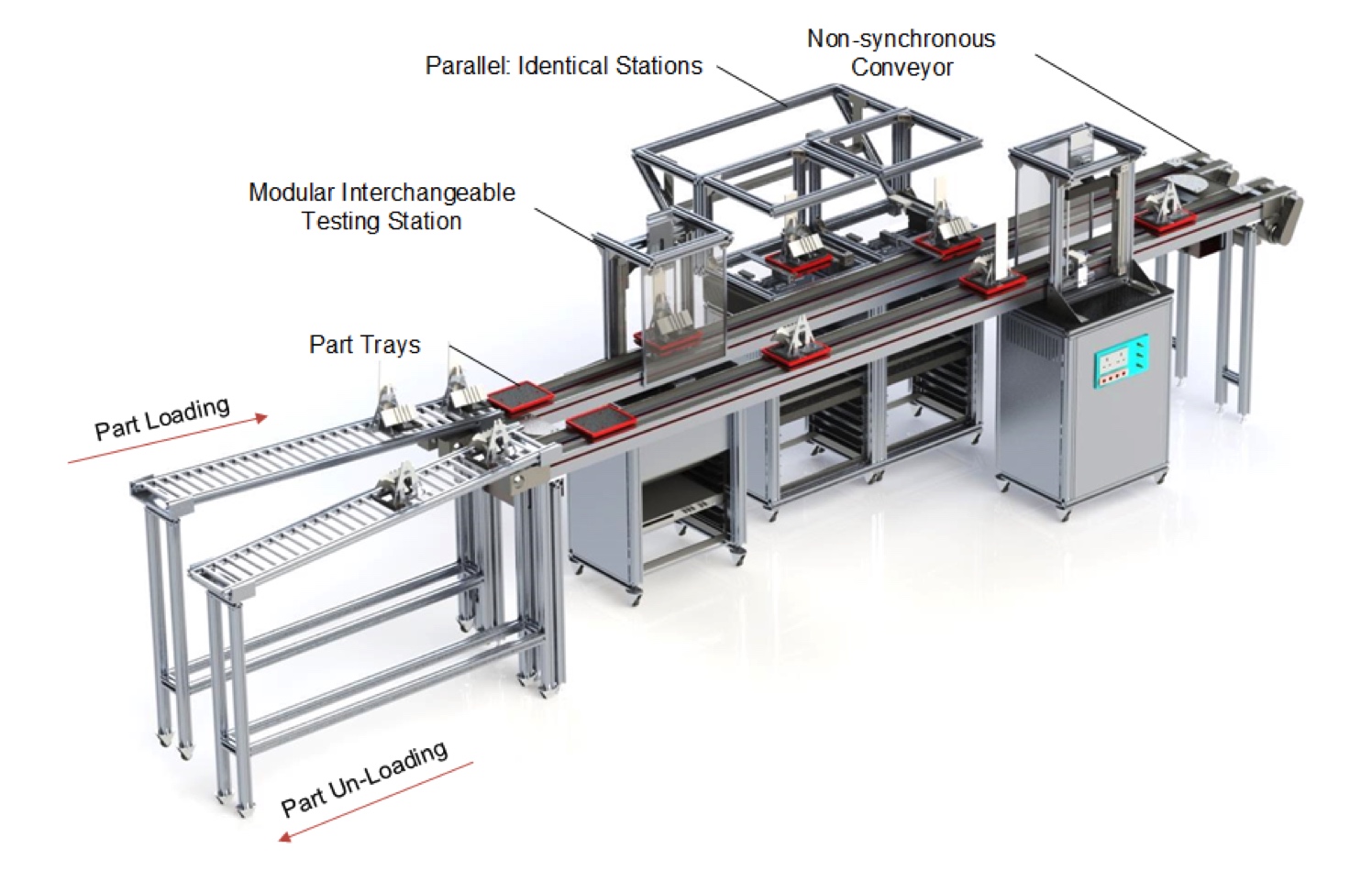
SR-TEX Platform
Automated production equipment enables a manufacturer to validate the function of their products, while providing insight into production quality. The SR-TEX platform enables the decentralised collaboration of independent plug-and-play test stations for universal serial product testing.
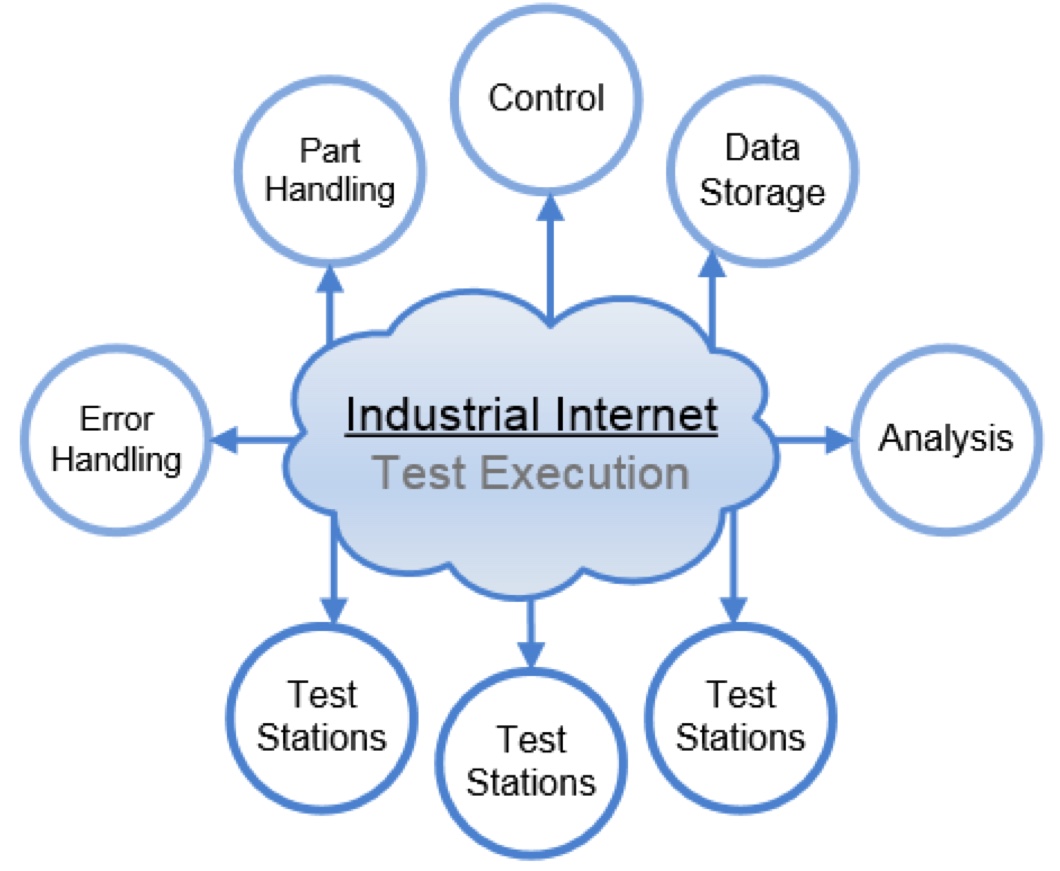
Illustration of Functional Block Linkage using SR-TEX Modular Configuration
A production process can now be represented by functional building blocks, and orchestrated through network communication. This enables a production process to be remotely configured and re-configured for different operations on-the-fly. The production process is now open to change and flexible to meet the requirements of a progress manufacturing enterprise.
Future development will see the SR-TEX platform utilised to create multiple types of production machines for use in manufacturing production and product test validation.
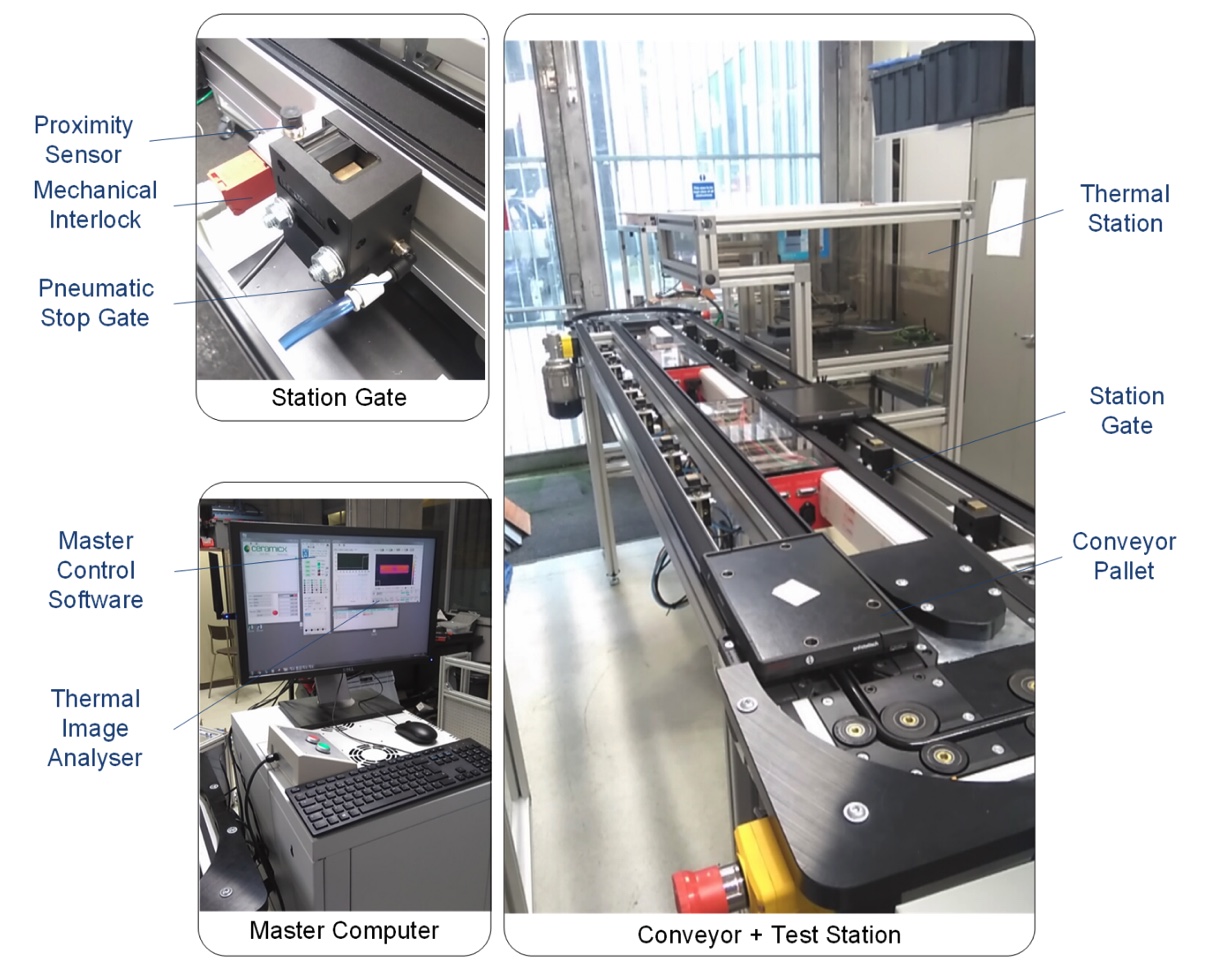
Example of a SR-TEX system configured for testing Infrared Heating Lamps
Wi-FORCE - Wireless Passive Force Measurement in Machining
Dr. Garret O'Donnell
Garret.ODonnell@tcd.ie
+353 1 896 1184
Dr. Sean Nolan
snolan1@tcd.ie
Industry Partner


Description
Wi-FORCE enables wireless passive tool force measurement during high-tech biomedical, automotive and aerospace machining applications facilitating online process optimisation and monitoring. Benefits are:
- Real-time monitoring of cutting forces
- Cost and scrap reduction due to optimisation of tool life and manufacturing processes
- Wireless, passive, and minimally invasive setup allowing better proximity to the cutting process
- Plug and produce functionality.
High end industrial sectors such as medical device or aerospace manufacturing in high wage economies must be constantly pushing the technology frontiers in order to optimise their internal production processes and stay ahead of competition. Medical and aerospace manufacturing companies have metal cutting at the core of their production processes and technologies such as Wi-Force that allow for optimisation of these processes directly impact on the core of these companies value adding activity.

Wi-FORCE Setup Overview, Applications and Benefits
The Wi-Force project is developing a cost effective non-invasive wireless passive rotary tool force measurement solution that provides process information that can be used to:
- Monitor wear during cutting therefore reduce tool replacement costs
- Detect chatter and detection/prediction of tool breakage therefore eliminating scrap
- Enable data driven parameter optimisation therefore improve quality and productivity
- Enable automated process supervision therefore reducing manning of machine tools
Crucial to the success of the project is the need for a product that meets the requirement for the seamless ability to substitute an instrumented tool holder for a standard tool holder in order to achieve acceptability. Wi-Force is unique in this regard as a plug and produce technology.
The machine-tool add-on SAWLINK is a wireless, passive force sensor for tool condition monitoring. During machining operations, it can measure the force and strain induced in the tool and holder. The data is transmitted wirelessly to the SAW interrogator and can be subsequently used to optimise the machining process, ensuring quality and productivity.

Wi-FORCE Machine-Tool integration
Energy and Resource Efficiency
Energy Systems Integration
Dr. Garret O'Donnell
Dr. Craig Meskell
Dr. Tim Persoons
Dr. Sean Nolan
Dominik Seiler
Industry Partner
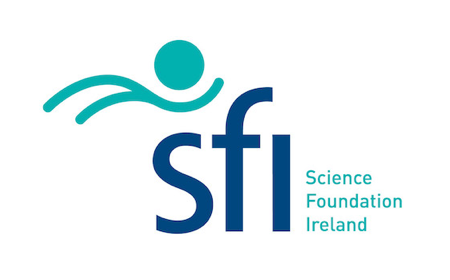

Description
The focus on this research is on the integration of Energy Systems, such as electricity and gas, along with other infrastructures including data, transport and water. As Energy Systems evolve they are becoming increasingly integrated.
This research seeks to provide an understanding of the interactions, and to identify ways to optimise these systems and energy use. It is part of the Energy Systems Integration Partnership Programme (ESIPP)
Auto-CASM - Compressed Air Systems Metrics
Dr. Garret O'Donnell
Garret.ODonnell@tcd.ie
+353 1 896 1184
Research Staff
Dr. Sean Nolan
snolan1@tcd.ie
Industry Partner

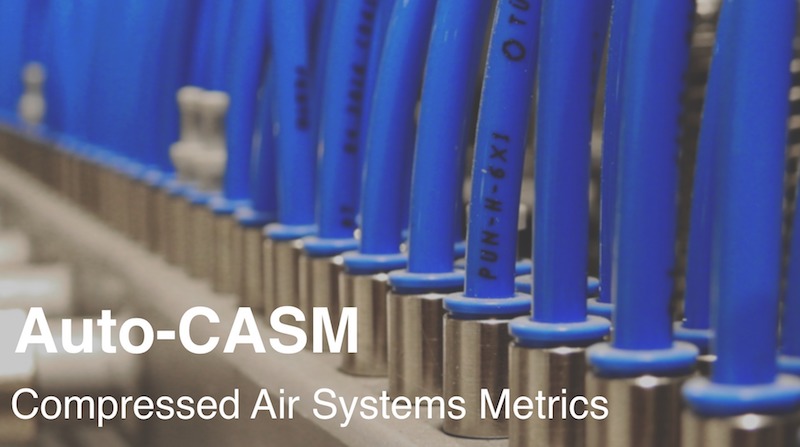
Description
Compressed air (CA) is used extensively in manufacturing to drive production lines and for material handling in manufacturing processes. Compressed air devices include blowers, nozzles, vacuum ejectors, linear actuators, air motors and machine tools. Within one automated machine the device count can be in the hundreds.
AutoCASM combines CA consumption monitoring, system health monitoring and fault diagnostics functionality within a single solution that is optimised for applications on point of use equipment and automated pneumatic machines. CA system monitoring solutions on the market do not provide fault/leak diagnostics capabilities.
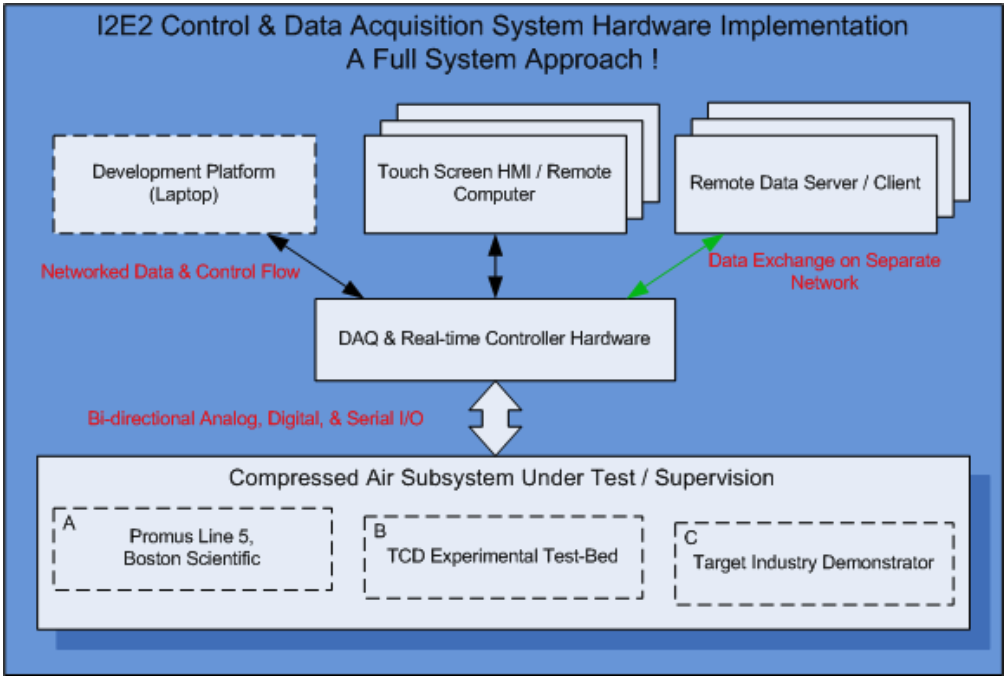
Auto-CASM Approach
Auto-CASM is both a monitoring and supervisory system allows pneumatic machine designers and equipment operators to monitor and improve the energy efficiency of Compressed Air driven manufacturing processes. Key advantages of the system are:
- Mobile Data Acquisition & Logging of CA Metrics
- Monitoring & Control of automated CA sub-systems
- Online Fault Diagnostics of CA Systems
- Online & Offline Leak Diagnostic & Evaluation
- Software to improve visibility on machine/device air consumption
- Automated testing and test scheduling
